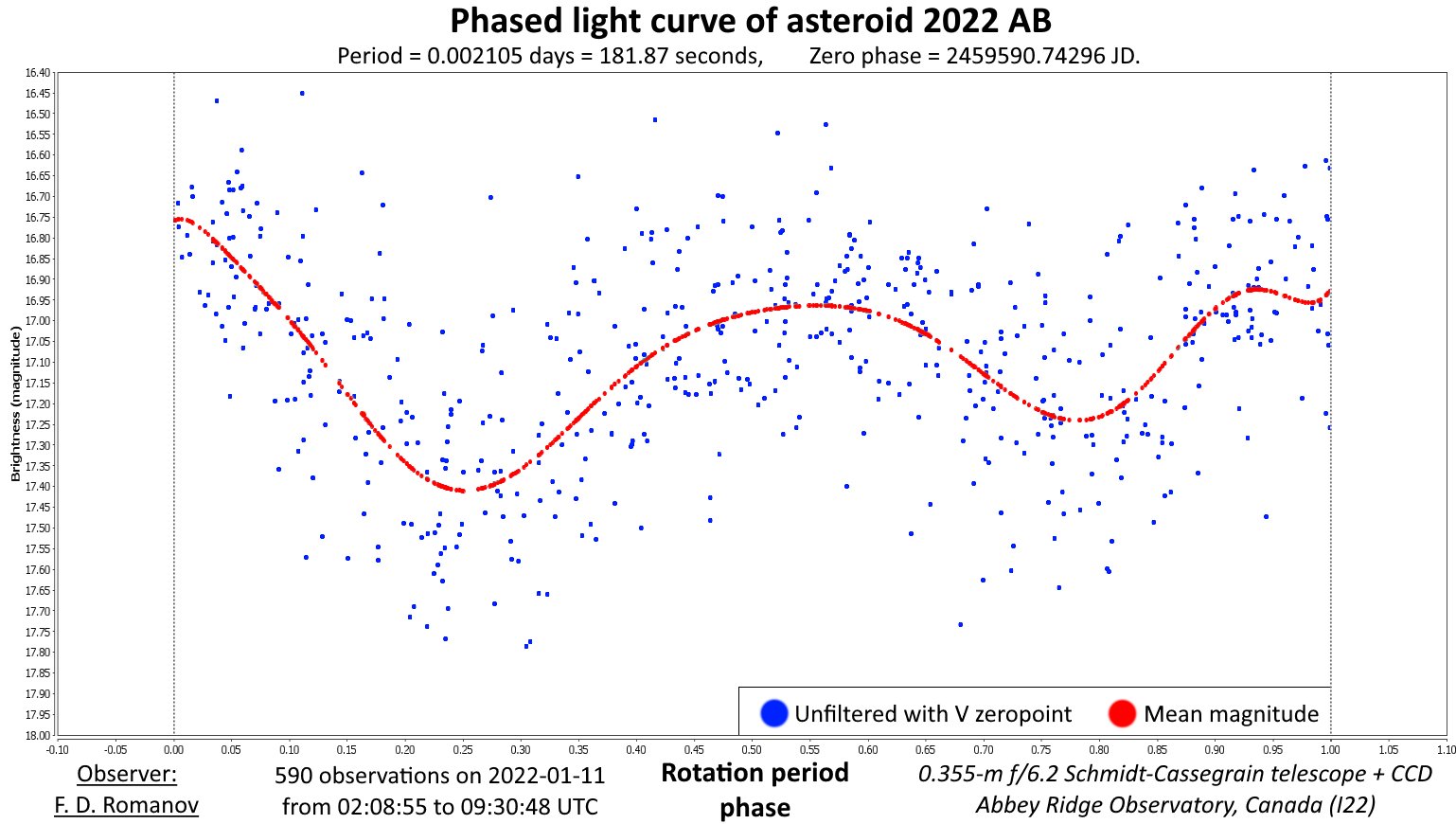October 25 - New Live Cameras
Two new live cameras have been added. These show the outside of ARO and MRO from my office window and the inside of the dome. Both have the IR lighting disabled so won't see much at night.
September 8 - Confirmation of Two New Comets: C/2022 Q2 (ATLAS) and C/2022 P3 (ZTF)
ARO observer Filipp Romanov contributed positions of two new comets that lead to their confirmation. These comets are very faint - about magnitude 19 - so were only visible by stacking and shifting the images at the expected motion of the comet. Observation links are: C/2022 P3 (ZTF) and C/2022 Q2 (ATLAS)
August 12 - HM Sge
Observations of HM Sge by ARO Observer Simone Bolzoni are used in this AAS Research Note. This note documents a sudden dimming of HM Sge, a symbiotic Mira-type variable star.
August 2 - Filipp Romanov Presents at IAU Meeting
Fillipp presented this poster paper at the 2022 IAU General Assembly - a rare thing for an amateur astronomer! He summarizes many of the observations and discoveries he has made over the past years. Some of these have used the ARO and BGO. Congratulations!!!
January 23 - Asteroid 2022 AB
This observation (see details below) was picked up by SpaceWeather.com!
January 20 - Asteroid 2022 AB

